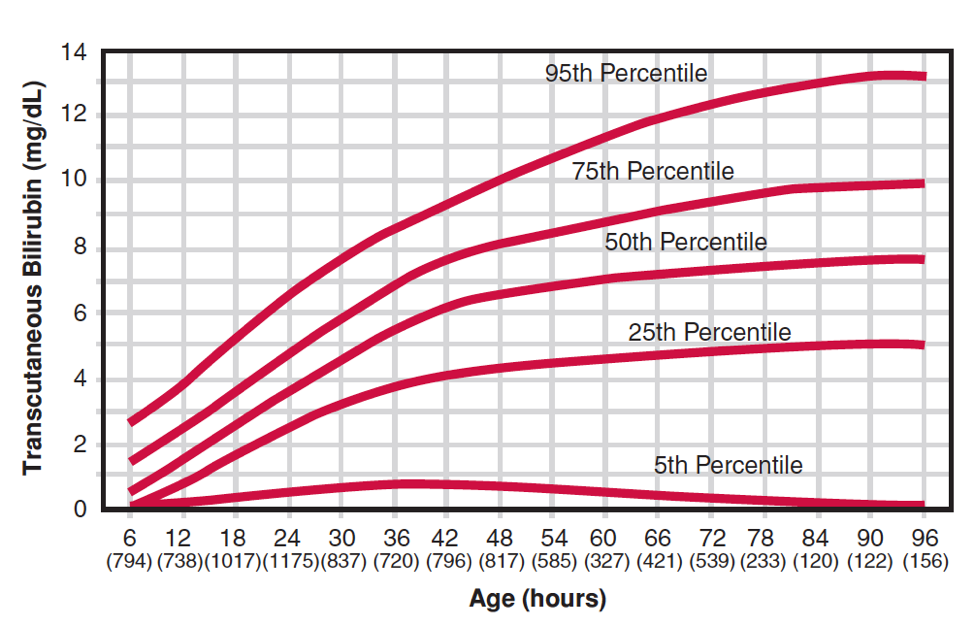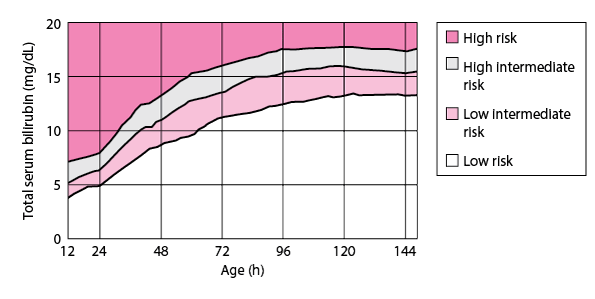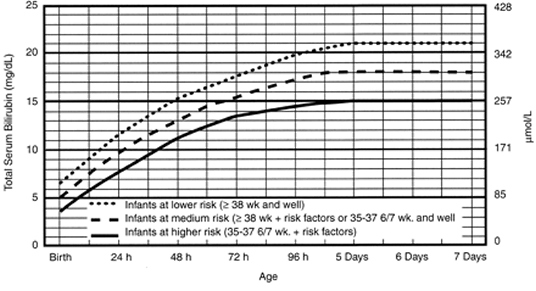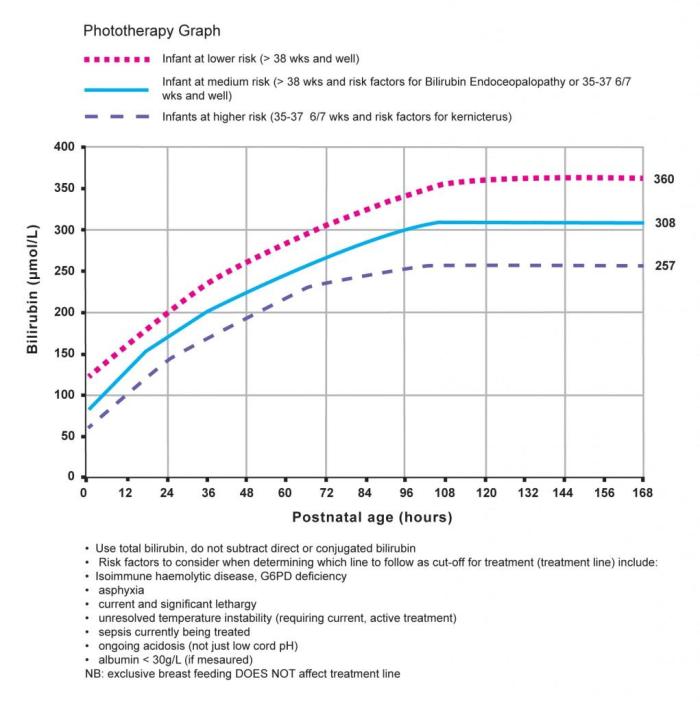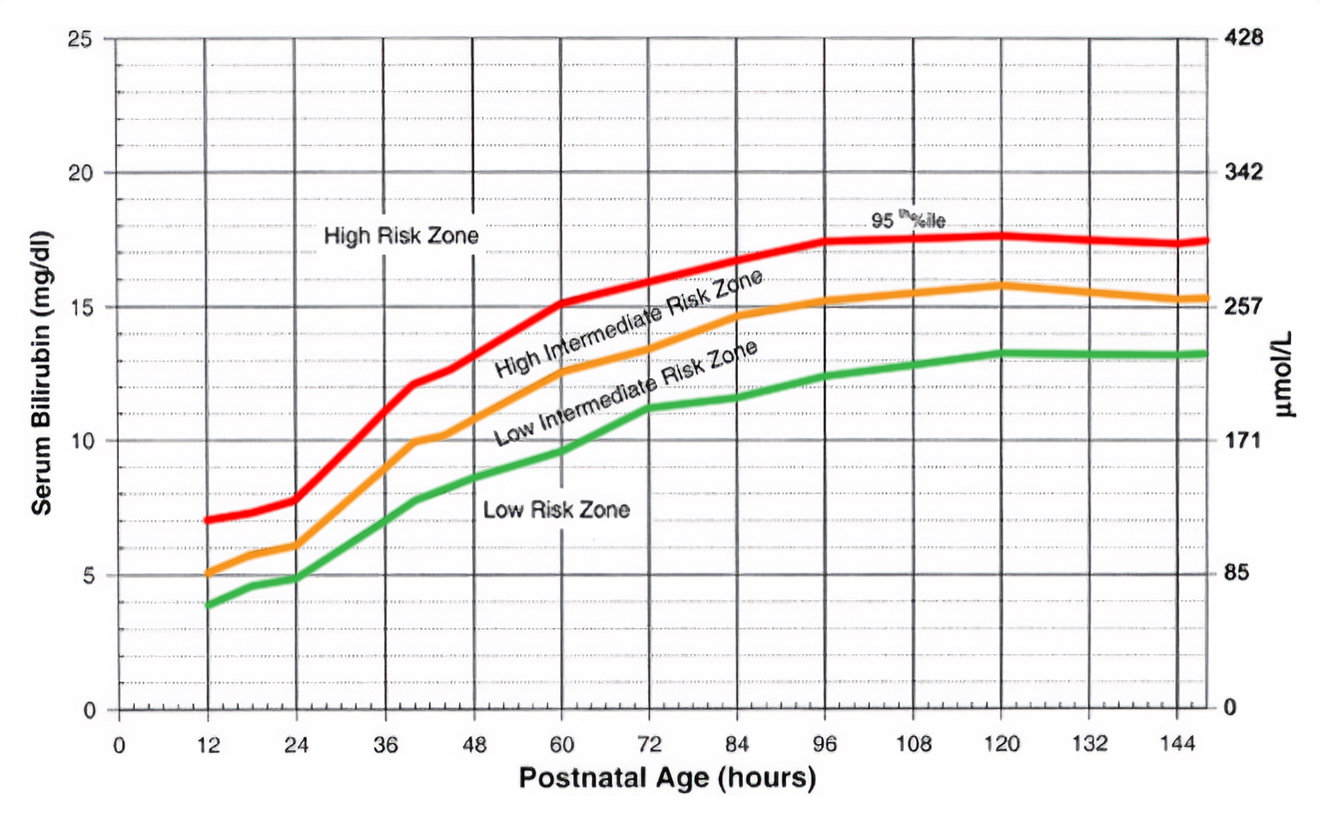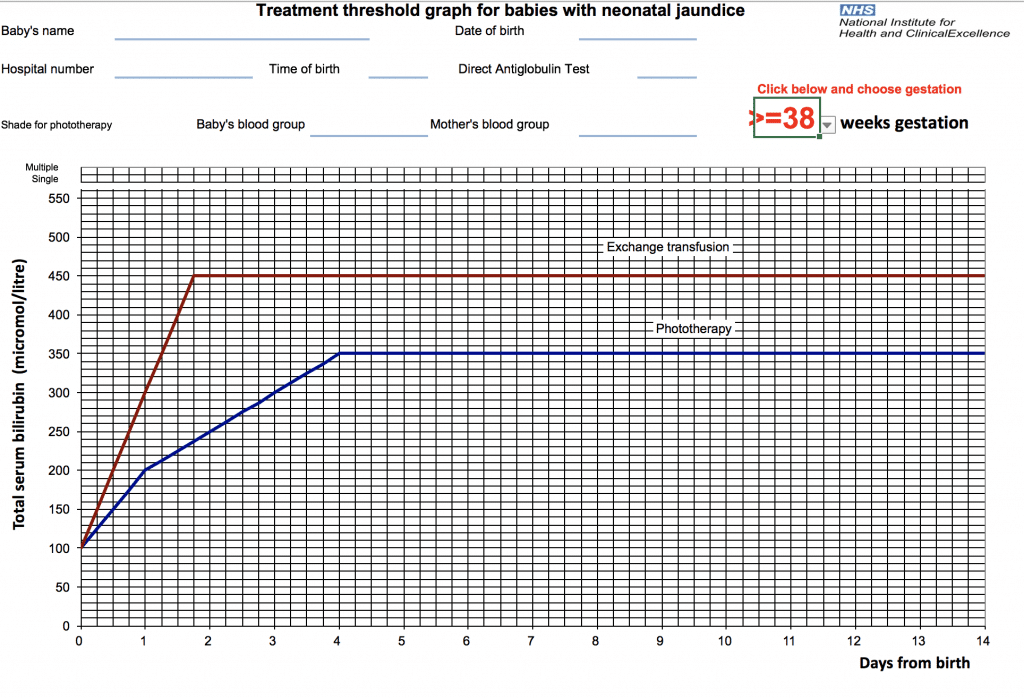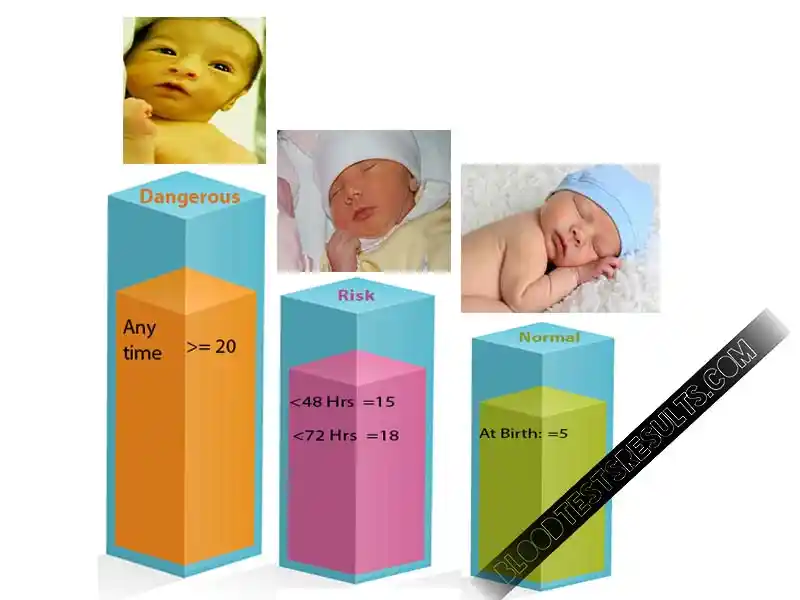Newborn Jaundice Levels Chart
Indirect bilirubin 08 07 06 0504 and 03 are all normal levels of blood bilirubin.
Newborn jaundice levels chart. Below 120 mg dl. Two entry options are available. Newborn jaundice neonatal hyperbilirubinemia is diagnosed when blood levels of bilirubin are over 5mgdL.
Normal bilirubin values lie between reference ranges the lower limit and the upper limit. Less than 24 hours. According to a bilirubin chart in newborn babies the normal values that have been highlighted are.
Termed as physiological jaundice. Recommendations Infants with a TSB concentration above the thresholds shown on Figure 3 should have immediate intensive phototherapy and should be referred for further investigation and preparation for exchange. Direct bilirubin 0 01 02 and 03 is normal results and cannot be a cause of jaundice unless indirect bilirubin continue to be high.
Plot the babys bilirubin level on the graph each time it is. Below 80 mg dl below 137 mmol l Less than 48 hours. Perform a systematic assessment on all infants before discharge for the risk of severe hyperbilirubinemia.
The bilirubin test for newborn determines the bilirubin levels. The normal range of bilirubin in a newborn baby is below 5mgdl. Once a bilirubin test is carried out the doctor will examine the levels.
Jaundice is common in the term newborn affecting between 60 of term and 80 of preterm babies in the first week of life. 4 rows Normal bilirubin levels are usually under 5mgdL but most newborns have it above 5mgdL and. Jaundice management for baby greater than 38 weeks gestation 34 Appendix B Nomogram.
Recognize that infants at less than 38 weeks gestation particularly those who are breastfed are at higher risk of developing hyperbilirubinemia and require closer surveillance and monitoring. Several health experts are known to use a neonatal bilirubin chart or an infant bilirubin chart so that they can keep a track of the amount of bilirubin that is present in the babys blood. Interpret all bilirubin levels according to the infants age in hours.
Required values include the age of the child in hours between 12-146 hours and the total bilirubin in either US mgdl or SI µmolL units. TSB level usually rises in term infants to a peak level of 12 to 15 mgdL by 3 days of age and then falls. Jaundice management for baby 350 to 376 weeks gestation 34.
However jaundice can be pathological when serum bilirubin levels rise rapidly or in the presence of risk factors. In October 2016 recommendation 149 was amended to clarify when intensified phototherapy should be used in. Physiological jaundice in healthy term babies usually sees bilirubin levels of about 5-6mgdL on day 4 after birth.
It aims to help detect or prevent very high levels of bilirubin which can be harmful if not treated. Approximately 60 of term neonates and 85 of preterm neonates will develop jaundice mostly as physiological jaundice which is usually benign. In most babies jaundice is a physiological process that is harmless unless the bilirubin level reaches a critical value that can occur in rare cases.
7 rows Key points. Visible jaundice usually appears between 24 to 72 hours of age. If the level of bilirubin is higher than this normal value the baby has neonatal jaundice.
These bilirubin levels according to the American Academy of Family Physicians are. They drop over the next week until they reach normal levels. If significant jaundice is clinically suspected a serum bilirubin level should be.
The information recorded on a bilirubin chart for infants can also be very useful in identifying the type of treatment that the baby needs to undergo. When using this nomogram remember that risk refers to the risk of a subsequent bilirubin level in that infant 95th percentile for age. Jaundice Levels Chart in Newborns Jaundice Levels 51215182030 explained Jaundice levels chart is to know the normal Jaundice Levels in newborn infants the risk jaundice levels that need treatment for the newborn baby and the new guidelines for effective treatment and fasts getting rid of jaundice.
Bilirubin levels are over 85 µmolL. Other criteria of non-physiologic jaundice are visible jaundice on the first day of life a. This guideline covers diagnosing and treating jaundice which is caused by increased levels of bilirubin in the blood in newborn babies neonates.
In preterm infants the peak level occurs on the 3 to 7 days of age and TSB can rise over 15 mgdL. About 10 of breastfed babies are still jaundiced at one month. Treatment threshold graph for babies with neonatal jaundice Babys blood group weeks gestation Direct Antiglobulin Test Shade for phototherapy 38 Where to find the guidance The NICE neonatal jaundice guideline contains recommendations about the recognition assessment and treatment of neonatal jaundice.
An ounce of technology. BiliTool is designed to help clinicians assess the risks toward the development of hyperbilirubinemia or jaundice in newborns over 35 weeks gestational age.
